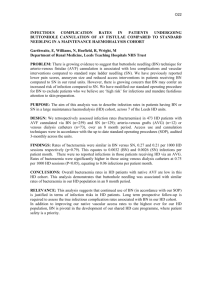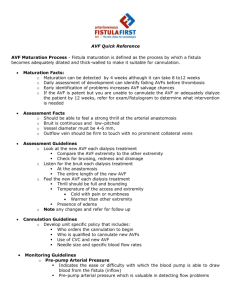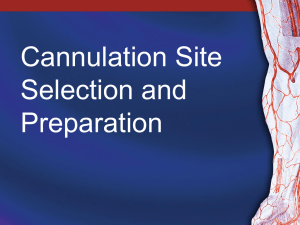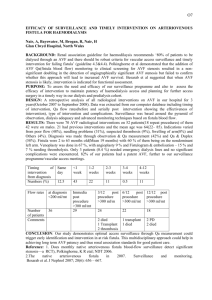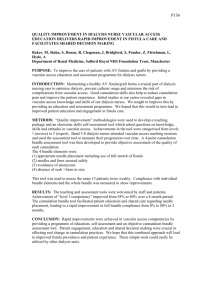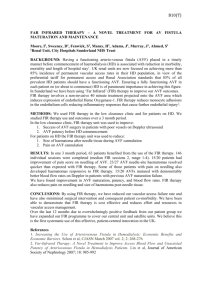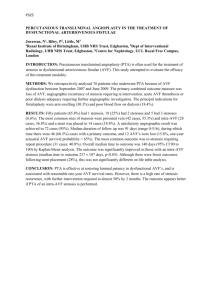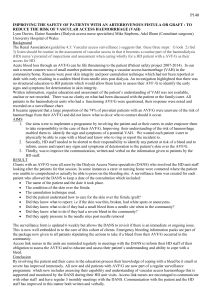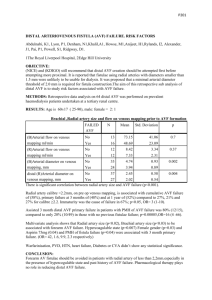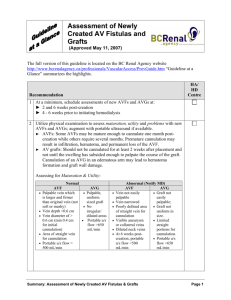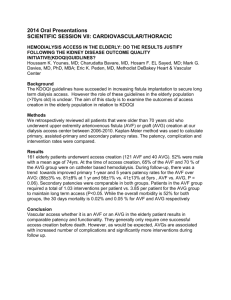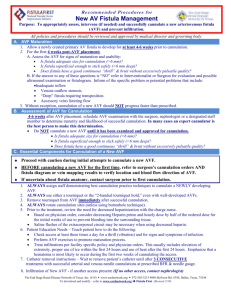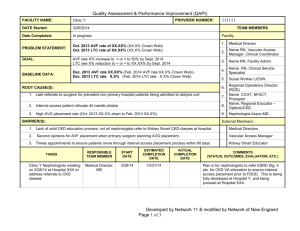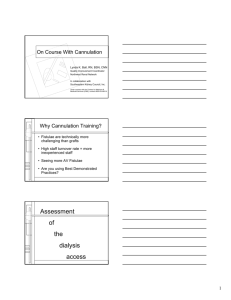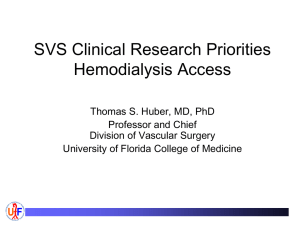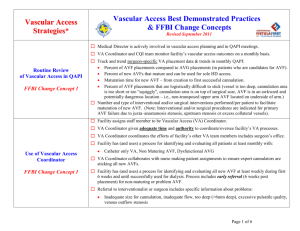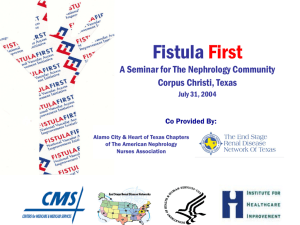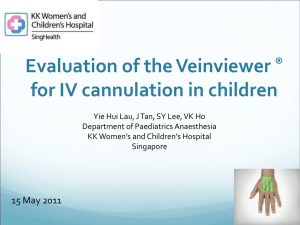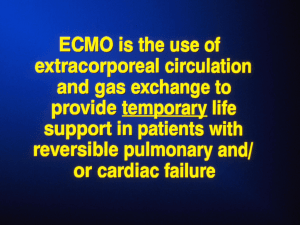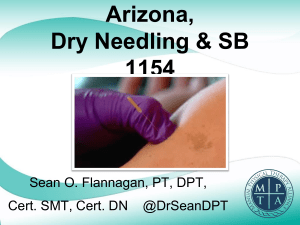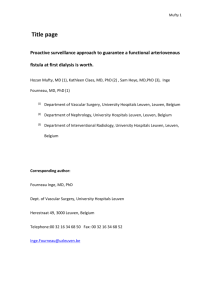p102: arterio-venous fistula cannulation: what
advertisement
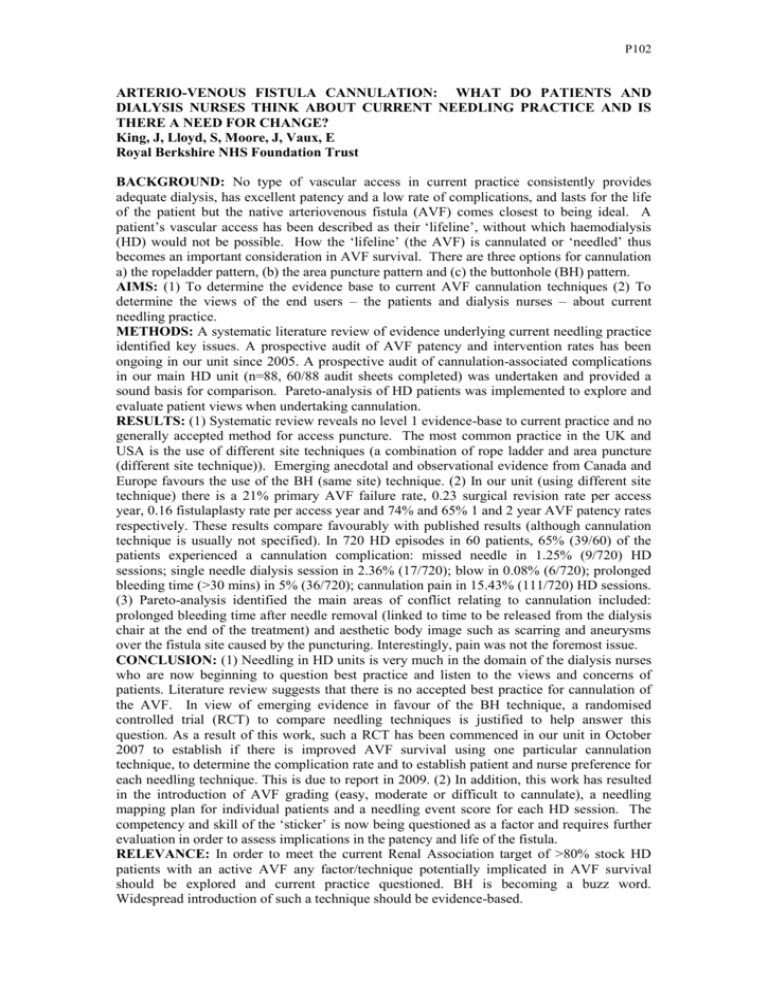
P102 ARTERIO-VENOUS FISTULA CANNULATION: WHAT DO PATIENTS AND DIALYSIS NURSES THINK ABOUT CURRENT NEEDLING PRACTICE AND IS THERE A NEED FOR CHANGE? King, J, Lloyd, S, Moore, J, Vaux, E Royal Berkshire NHS Foundation Trust BACKGROUND: No type of vascular access in current practice consistently provides adequate dialysis, has excellent patency and a low rate of complications, and lasts for the life of the patient but the native arteriovenous fistula (AVF) comes closest to being ideal. A patient’s vascular access has been described as their ‘lifeline’, without which haemodialysis (HD) would not be possible. How the ‘lifeline’ (the AVF) is cannulated or ‘needled’ thus becomes an important consideration in AVF survival. There are three options for cannulation a) the ropeladder pattern, (b) the area puncture pattern and (c) the buttonhole (BH) pattern. AIMS: (1) To determine the evidence base to current AVF cannulation techniques (2) To determine the views of the end users – the patients and dialysis nurses – about current needling practice. METHODS: A systematic literature review of evidence underlying current needling practice identified key issues. A prospective audit of AVF patency and intervention rates has been ongoing in our unit since 2005. A prospective audit of cannulation-associated complications in our main HD unit (n=88, 60/88 audit sheets completed) was undertaken and provided a sound basis for comparison. Pareto-analysis of HD patients was implemented to explore and evaluate patient views when undertaking cannulation. RESULTS: (1) Systematic review reveals no level 1 evidence-base to current practice and no generally accepted method for access puncture. The most common practice in the UK and USA is the use of different site techniques (a combination of rope ladder and area puncture (different site technique)). Emerging anecdotal and observational evidence from Canada and Europe favours the use of the BH (same site) technique. (2) In our unit (using different site technique) there is a 21% primary AVF failure rate, 0.23 surgical revision rate per access year, 0.16 fistulaplasty rate per access year and 74% and 65% 1 and 2 year AVF patency rates respectively. These results compare favourably with published results (although cannulation technique is usually not specified). In 720 HD episodes in 60 patients, 65% (39/60) of the patients experienced a cannulation complication: missed needle in 1.25% (9/720) HD sessions; single needle dialysis session in 2.36% (17/720); blow in 0.08% (6/720); prolonged bleeding time (>30 mins) in 5% (36/720); cannulation pain in 15.43% (111/720) HD sessions. (3) Pareto-analysis identified the main areas of conflict relating to cannulation included: prolonged bleeding time after needle removal (linked to time to be released from the dialysis chair at the end of the treatment) and aesthetic body image such as scarring and aneurysms over the fistula site caused by the puncturing. Interestingly, pain was not the foremost issue. CONCLUSION: (1) Needling in HD units is very much in the domain of the dialysis nurses who are now beginning to question best practice and listen to the views and concerns of patients. Literature review suggests that there is no accepted best practice for cannulation of the AVF. In view of emerging evidence in favour of the BH technique, a randomised controlled trial (RCT) to compare needling techniques is justified to help answer this question. As a result of this work, such a RCT has been commenced in our unit in October 2007 to establish if there is improved AVF survival using one particular cannulation technique, to determine the complication rate and to establish patient and nurse preference for each needling technique. This is due to report in 2009. (2) In addition, this work has resulted in the introduction of AVF grading (easy, moderate or difficult to cannulate), a needling mapping plan for individual patients and a needling event score for each HD session. The competency and skill of the ‘sticker’ is now being questioned as a factor and requires further evaluation in order to assess implications in the patency and life of the fistula. RELEVANCE: In order to meet the current Renal Association target of >80% stock HD patients with an active AVF any factor/technique potentially implicated in AVF survival should be explored and current practice questioned. BH is becoming a buzz word. Widespread introduction of such a technique should be evidence-based. P102
